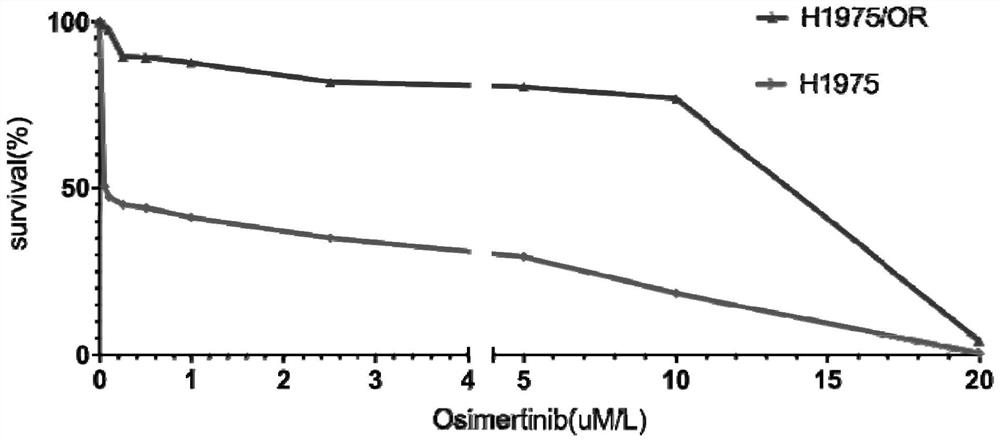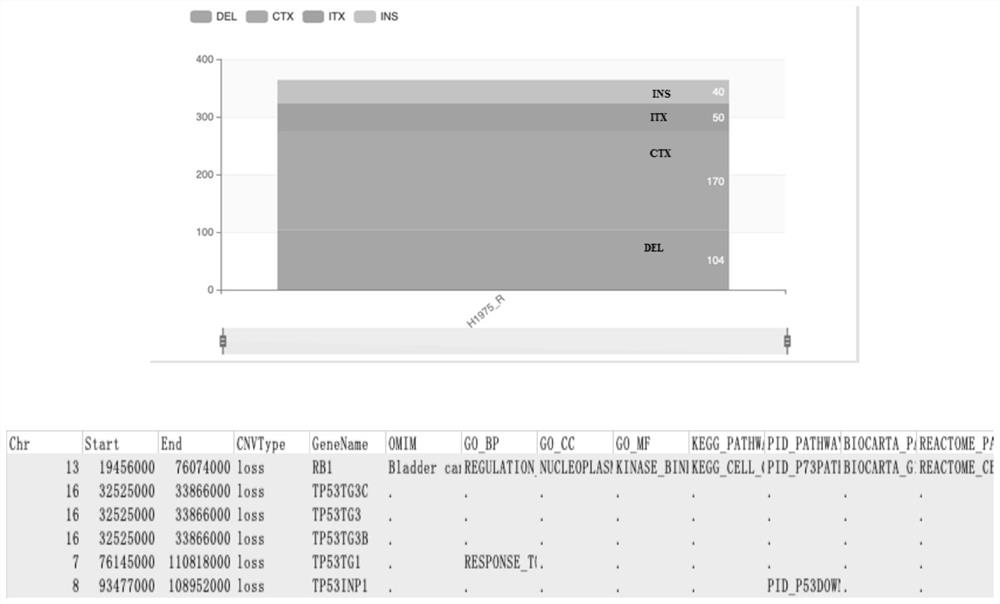Osimertinib-resistant human non-small cell lung cancer cell strain H1975/OR and application thereof
A non-small cell lung cancer, lung cancer cell technology, applied in the field of human non-small cell lung cancer cell line H1975/OR, can solve the problem of unclear drug resistance mechanism
- Summary
- Abstract
- Description
- Claims
- Application Information
AI Technical Summary
Problems solved by technology
Method used
Image
Examples
Embodiment 1
[0021] Example 1 Preparation of osimertinib-resistant human non-small cell lung cancer cell line H1975 / OR
[0022] The preparation method comprises the following steps:
[0023] (1) Human EGFR-positive non-small cell lung cancer cell line H1975 (hereinafter referred to as human non-small cell lung cancer cell line H1975) was purchased from American Type Culture Collection (ATCC). Place the cell H1975 strain in RPMI1640 culture medium containing 25 mmol / L 4-(2-hydroxyethyl)-1-piperazineethanesulfonic acid (HEPES) and 10% fetal bovine serum (FBS) (hereinafter referred to as H1975 medium) at 37°C, 5% CO 2 , cultured in an incubator with saturated humidity, digested and passaged with 0.25% trypsin and ethylenediaminetetraacetic acid (0.25% Trypsin-EDTA);
[0024] (2) Take about 5×10 5 A H1975 cell was placed in a culture flask, and after 24 hours of attachment, the old culture medium was aspirated, and the newly prepared H1975 medium containing 0.1 μmol / L osimertinib was added,...
Embodiment 2
[0026] Example 2 Cryopreservation of osimertinib-resistant human non-small cell lung cancer cell line H1975 / OR of the present invention
[0027] The drug-resistant cells obtained in Example 1 were placed in the cryopreservation solution of the cryopreservation tube, and then the cryopreservation tube was placed in liquid nitrogen for preservation. The cryopreservation medium consists of 90% H1975 medium and 10% dimethyl sulfoxide (DMSO). The cryopreservation process takes the steps of placing the cryopreservation tube in a nalgene programmed cooling box, overnight at -80°C, and finally putting it into liquid nitrogen.
Embodiment 3
[0028] Example 3 Recovery of osimertinib-resistant human non-small cell lung cancer cell line H1975 / OR
[0029]Take out the cryopreservation tube containing the cells from the liquid nitrogen, immediately put it in a 37-40°C water bath and shake it gently, so that the frozen storage will thaw within 1 minute, wipe the outer wall of the cryopreservation tube with an alcohol cotton ball and put it into the ultra-clean tower. Put the thawed cell suspension into a 15ml sterile centrifuge tube, add 5ml of H1975 medium, centrifuge at 1200 rpm for 5 minutes, discard the supernatant, add 5ml of H1975 medium containing 10μmol / L osimertinib, and Pipette and mix to form a mixed solution, suck the mixed solution and put it into a 25cm 2 In the cell culture bottle, unscrew the bottle cap and put it in a carbon dioxide incubator at 37°C, 5% CO 2 1. Cultivate under the condition of saturated humidity, replace the medium once every 3-4 days, digest when the cell density reaches 80-90%, and ...
PUM
 Login to View More
Login to View More Abstract
Description
Claims
Application Information
 Login to View More
Login to View More - R&D
- Intellectual Property
- Life Sciences
- Materials
- Tech Scout
- Unparalleled Data Quality
- Higher Quality Content
- 60% Fewer Hallucinations
Browse by: Latest US Patents, China's latest patents, Technical Efficacy Thesaurus, Application Domain, Technology Topic, Popular Technical Reports.
© 2025 PatSnap. All rights reserved.Legal|Privacy policy|Modern Slavery Act Transparency Statement|Sitemap|About US| Contact US: help@patsnap.com



